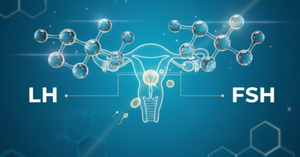Premenstrual syndrome (PMS) is a group of physical, emotional, and behavioral symptoms that occur in the days before menstruation. For many women, PMS is mild and manageable. However, in some cases, PMS can become severe and interfere with daily life. When this happens, medical advice is needed. Understanding the difference between typical PMS and severe PMS helps women take the right steps toward relief.
PMS usually appears one to two weeks before menstruation and ends when bleeding starts. Common symptoms include:
These changes occur due to hormonal shifts in the menstrual cycle, mainly fluctuations in estrogen and progesterone. While most women experience some level of PMS, the severity and type of symptoms vary widely.
PMS is considered severe when symptoms:
In some cases, severe PMS may indicate a condition called premenstrual dysphoric disorder (PMDD). PMDD is a more serious form of PMS, with symptoms such as extreme mood changes, severe irritability, or depression.
Healthy habits can reduce symptom intensity:
Stress often intensifies PMS symptoms. Practicing relaxation methods, such as deep breathing, yoga, or meditation, can lower stress levels and improve overall well-being.
Non-prescription pain relievers such as ibuprofen or naproxen can help with cramps, headaches, and body aches. Some women also find relief with calcium or magnesium supplements, though medical consultation before use is recommended.
Keeping a symptom diary helps identify patterns and possible triggers. This record can guide both self-care and medical consultations.
It is important not to dismiss symptoms that are too intense or unusual. A doctor should be consulted when:
Medical professionals can help rule out other conditions that may mimic PMS, such as thyroid disorders, depression, or anxiety.
When lifestyle changes are not enough, doctors may recommend medical treatments.
Seeking medical advice not only provides symptom relief but also ensures that no other health condition is being overlooked. Hormonal imbalance, thyroid dysfunction, or other gynecological issues can sometimes present as PMS-like symptoms. Proper diagnosis is key to effective treatment.
While not all severe PMS can be prevented, some measures may reduce the risk of symptoms worsening over time:
These practices support hormonal balance and improve resilience against monthly changes.
Severe PMS should not be ignored. While mild PMS is common, symptoms that disturb daily life, cause emotional distress, or persist despite healthy habits require medical attention. Coping strategies such as balanced nutrition, exercise, stress management, and symptom tracking can provide relief. However, medical evaluation ensures accurate diagnosis and effective treatment, especially when symptoms may suggest PMDD or another health condition.
Taking PMS seriously is a step toward better health and quality of life. When in doubt, it is always best to consult a healthcare professional rather than endure silent suffering.
About PeriodSakhi
PeriodSakhi is your trusted companion for understanding your menstrual health. With easy-to-use tools, it helps you track your periods, ovulation, fertility, moods, and symptoms, while providing insights into your overall reproductive and hormonal health. PeriodSakhi also serves as a supportive online community where women can share experiences, find reliable information, and access expert-backed guidance on menstrual health, PCOS, pregnancy, lifestyle, and more.
Disclaimer
The views, thoughts, and opinions expressed in this article/blog are solely those of the author and do not necessarily reflect the views of PeriodSakhi. Any omissions, errors, or inaccuracies are the responsibility of the author. PeriodSakhi assumes no liability or responsibility for any content presented. Always consult a qualified medical professional for specific advice related to menstrual health, fertility, pregnancy, or related conditions.
Start the conversation
No comments yet. Start the conversation by leaving the first comment!





